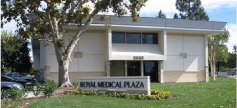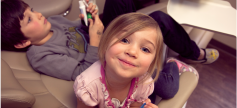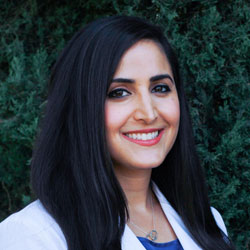How can we help you?
Dr. Sahar Yaftaly and our team wish to keep you informed so that you can make knowledgeable decisions about your dental care. We will answer all your questions, and help you find the answers you want before selecting your preferred course of action.
Below are several questions our patients have asked us. If you want information about a specific condition or treatment that is not listed below, contact our office, and we’ll gladly discuss it with you.
Other
Absolutely!
The highest compliment our existing patients can give us is referring their friends, coworkers, and loved ones to us for dental care.
Scheduling your first appointment at our practice is easy. You can either call us at (805) 522-9242 or send us an appointment request using the online form found on the Contact page of this website. We can't wait to meet you!
We recognize that our patients lead busy lives and occasionally it's simpler to see a dentist on a Saturday so as not to interfere with work or school. Emergencies can also happen, and they don't always happen during regular office hours! At this time, Dr. Yaftaly is not in the office on Saturdays, but either herself or another provider is available on an emergency bases.
Yes. We offer an in-house credit card payment arrangement, which would allow you to spread your payments over 90 days.
Our office also works with CareCredit, which offers a no-interest payment option of 6 to 12 months on approved credit. CareCredit is a healthcare credit card that can be used to pay for dental services – elective treatments such as veneers or dental alignment, or necessary services like dental cleanings, regular check-ups, endodontic procedures, and periodontal disease prevention.
The longer payment term allows you to lessen what could be an onerous financial responsibility. As CareCredit is a credit card, it not only keeps your dental care costs separate from your other credit card purchases (the better to track your dental expenses), it also can be reused once the balance is paid. It can be used to pay for your insurance deductibles and co-payments as well. You may also find special financing offers once you apply, which can be done at our office or online at http://www.carecredit.com/apply.
You can use CareCredit by itself, or in combination with a credit card or cash arrangement with our office. We can help you to apply in office or over the phone, so if you’re interested in applying for CareCredit, please call our office.
Contact our office at our phone number. Dr. Yaftaly has an emergency phone number listed on our voice messaging system where she can be reached in case of a dental emergency occurring after hours. If she leaves town or is otherwise unavailable, she ensures that she has a local dentist covering for her; in that case, the contact information will be left on the voice messaging system as well.
If you are calling after hours, we will make an appointment for you to come in as soon as possible as a tooth injury should be taken care of quickly to avoid causing further harm to the mouth. There are some steps you can take if the injury happens after our office is closed or late at night:
- Soothe a toothache with a warm-water rinse, an over-the-counter painkiller, and a cold compress applied to your mouth or cheek to reduce swelling. If there’s food or matter lodged between your teeth, remove it with dental floss. Never apply aspirin against your gums or near the aching tooth; it may burn the gum tissue.
- If you chip or break a tooth, rinse your mouth with warm water; make sure to rinse and save any tooth pieces. Put gauze on any bleeding area in your mouth and apply light pressure until the bleeding stops. If there’s swelling, place a cold compress against your lip, cheek, or mouth.
- If a tooth has been knocked out, retrieve it, hold it by the crown, and rinse off the root with warm water (take care not to remove any attached tissue). Try to put the tooth back in its socket, but do not force it. If you can’t re-seat the tooth, then place it in a small cup of milk, or water with a pinch of salt, and try to see a dentist as soon as possible. It is possible to save a tooth if you see a dentist and have it placed back in its socket within one hour of being knocked out.
- For a partially dislodged (extruded) tooth, put a cold compress to the outside of your mouth or cheek for the pain, and take an over-the-counter pain relief medication (such as Advil or Tylenol).
- Objects caught between the teeth should be removed with dental floss only. If the object will not move, do not use a pin or knife-tip (or any other sharp object) to try to get it out. You can cut your gums or scratch the surface of your teeth.
- Lost fillings can be temporarily filled with a piece of sugarless gum placed in the cavity, or over-the-counter dental cement. Lost crowns can be slipped back over the tooth, and held in place with over-the-counter dental cement, toothpaste, or denture adhesive. If the area is painful, apply a little clove oil on the tip of a cotton swab before putting the crown back in place.
- If a wire breaks on your braces, try to push it back into place with the eraser end of a pencil. If you can’t move it back or put it in a more comfortable place, cover the end of the wire with dental wax, or a piece of cotton or gauze. Never cut the wire, as you could swallow or accidentally aspirate the metal bit.
- Loose braces can temporarily be re-attached with a bit of dental wax. You can also place the wax over the braces to cushion them. Loose bands must be brought back to the orthodontist to be re-cemented or replaced, so save it and make an appointment.
- Abscesses, infections that set up at the root of a tooth or between the teeth and gums, can spread quickly if not treated right away. To ease the pain and draw the pus to the surface, rinse your mouth with a salt-water solution (1/2 teaspoon of table salt in 1 cup of water) at least once an hour. Take an over-the-counter non-steroidal anti-inflammatory medication such as ibuprofen (Advil).
In our office, we are committed to putting patient safety first. That includes keeping our instruments and patient care rooms sterile. Instruments that cut bone, penetrate soft tissue, or touch mucous membranes are cleaned of debris and sterilized in a state-of-the-art autoclave between patients. Every week, the autoclave is tested to make certain it is working in compliance with CDC sterilization requirements.
To avoid cross infection (transferring infection from one patient to another), each patient care room is cleaned between patients using a surface sterilization spray. Distilled water is used for all our dental procedures to avoid microbial contamination. Our team also washes their hands and changes their gloves between patients.
You may still have questions about our sterilization practices even after coming to the office. Please let us know any concerns you may have or if we can provide you with more information about the steps we take to protect your health.
We work with most PPO insurances, including Dental Health Alliance, Dental Benefit Providers, Cigna, Metlife, Aetna, Anthem, Blue Cross Blue Shield, Guardian, Connection Dental, GEHA, and others that are under the bigger umbrellas such as DHA (Dental Health Alliance). This list is constantly being updated, so if you don't see your insurance on this list, give us a call or email us. We'll happy check your coverage and see how we can help you!
If you currently do not have insurance, or your employer does not offer dental benefits, you can still find coverage for yourself and your family. The state of California is now offering dental insurance on its Covered California site (http://www.coveredca.com/individuals-and-families/getting-covered/dental-coverage/). Because dental coverage for adults is not considered an “essential health benefit” under the Patient Protection and Affordable Care Act (PPACA), dental insurance is offered separately from health insurance plans. However, dental coverage for children is considered an essential health benefit, so the plans on Covered California cover children’s dental care as well as their parents.
At this time, we do not work with any HMO insurances.
Many of our patients appreciate the level of care our office provides so they choose to see us on an out-of-network basis. We will still process your insurance claims on your behalf to help maximize your benefits for you.
Dentures
Yes, we make and repair dentures. Dr. Dovidio and Dr. Yaftaly are experienced in creating dentures from the years each served as residents at the Veterans Administration Medical Center in North Hills, CA and Los Angeles, CA respectively. While many patients see us for dental implants, many others have expressed a desire for dentures or a need to repair their existing sets.
If you would like to have a set of dentures made, a consultation with Dr. Dovidio/Dr. Yaftaly will help to guide you in your decision. Dentures can be made to match both your facial structure and desired tooth color and are a feasible replacement for lost teeth.
Being made of resin and plastic, dentures can be damaged from wear and tear. If your dentures have stains that resist removal with brush and denture cleaners, you may bring them to our office, where our hygienists can use an ultrasonic cleaner to remove stains and polish the dentures. Likewise, any cracking or breakage that occurs in your dentures should be repaired professionally, as Dr. Dovidio/Dr. Yaftaly will need to ensure that they fit precisely to avoid problems with chewing and causing sore spots in your mouth. For your benefit, your dentures should be replaced every five to seven years.
Pediatric Dentistry
You can bring your child to see Dr. Dovidio/Dr. Yaftaly when they are two years old, but we encourage our patients to bring their children along on appointments so that they can become familiar with the office and our team before it’s time for their first check-up. Of course, if you have concerns about your child’s dental health, Dr. Dovidio/Dr. Yaftaly will gladly meet with you to discuss them.
It is important to protect your child’s gums before the first tooth erupts. Dr. Dovidio/Dr. Yaftaly can advise you on topics ranging from infant oral care and thumb-sucking to extended bottle and pacifier use. Once your child’s teeth come in, you can show them how to brush and floss their teeth, holding their toothbrush and taking care that they spit and rinse. During their first check-up, Dr. Dovidio/Dr. Yaftaly will take digital x-rays to see that their teeth are developing properly and inspect them for cavities. Afterwards, you can schedule regular dental cleanings and check-ups.
If you want additional protection for your child’s teeth, consult with Dr. Dovidio/Dr. Yaftaly about sealants and fluoride varnishes. Fluoride varnish is applied with a small brush to your child’s teeth and helps to strengthen the enamel. A sealant, which is a thin layer of plastic painted onto the teeth, helps to protect the teeth from food and plaque.
Preventive Dental Care
Patients are often confused about how they are supposed to be taking care of their teeth once they get home from their check ups. There are several schools of thought, but this video outlines the techniques that have been best studied and provides the most consistent results for most patients. Of course, if this technique does not seem to be working for you, don't hesitate to ask us to modify this technique to best suit your specific situation. Happy brushing!
For decades, film x-rays were the standard for radiography. Film x-rays took 10 to 15 minutes at a time to develop, which resulted in time lost to developing film that could have been spent treating patients. Multiple x-rays often needed to be taken, which was a concern due to patients’ repeated exposure to radiation. Often, patients would move during taking x-rays, which meant that some x-rays would need to be retaken.
Digital x-rays can capture images in seconds, and those images can be uploaded and displayed upon a computer monitor for you to see in the same amount of time. It translates to less time you need to spend in the dental chair, and more time that Dr. Yaftaly can devote to your treatment. Because the digital images can be enhanced and enlarged, Dr. Yaftaly can see areas of damage that would not be visible with traditional x-rays and prescribe treatment accordingly.
As less time is spent acquiring images, digital x-rays also can reduce the levels of exposure to radiation by as much as 85%. Without the need to print and develop film, there is also a sharp reduction in chemical waste, which works to our patients’ benefit through cost savings. And digital images can be emailed to insurers, enabling them to see x-rays in minutes, as opposed to sending the images by mail with a wait time of several days.





